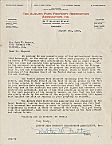| Entries |
| N |
|
Neighborhood Succession
|

|
The Great Migration of African Americans beginning in 1916 combined with the exclusion of blacks from most neighborhoods to generate a persistent gap between the supply and demand of housing available for blacks. African Americans seeking housing became the main agents of neighborhood succession. Real-estate blockbusters played a significant role, as they sought to profit from white fears by encouraging black residents to settle on previously all-white blocks and then advising longtime residents to sell to avoid a supposedly impending drop in the value of their property.

|
In the late twentieth century, the steady growth of the Latino population stimulated a change in the ethnic composition of some Bungalow Belt neighborhoods on the Southwest and Northwest Sides from white ethnic to majority or near majority Latino status, usually Mexican but often including Puerto Ricans, Cubans, and Central American groups as well.
Neighborhood succession can also involve shifts in socioeconomic class. Until the second half of the twentieth century, class change in Chicago neighborhoods was generally accompanied by a deterioration of the local housing stock. However, in recent decades, the growing phenomenon of gentrification has transformed many once working-class areas into affluent neighborhoods.
The Encyclopedia of Chicago © 2004 The Newberry Library. All Rights Reserved. Portions are copyrighted by other institutions and individuals. Additional information on copyright and permissions.